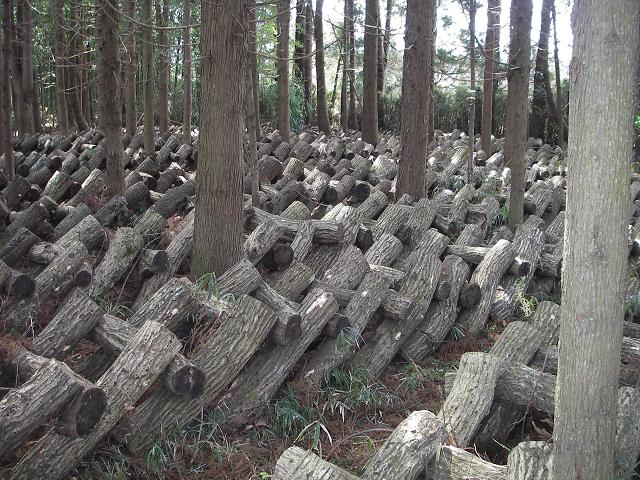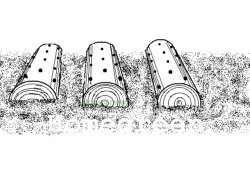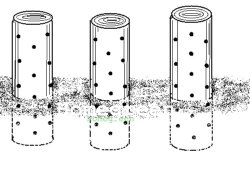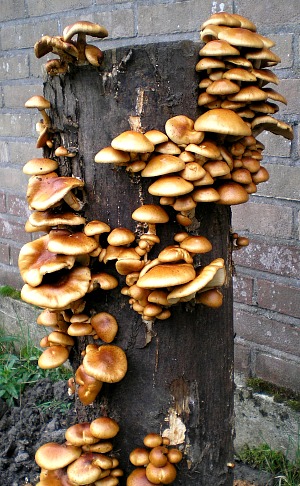Mushroom cultivation on logs
The Chinese and Japanese already know for about 1000 years that growing mushrooms on logs has its advantages.
It is an easy and natural way, the taste is better, it is very environmentally friendly, no heat, no steam and expensive ventilation systems, but natural wood recycling.
Here too, there's small scale cultivation on logs, and there are enough customers that recognize the quality of a natural product.
In the first chapter "Growing mushrooms in your garden," I discuss the inoculation of the logs, this chapter will be about how the logs are treated afterwards.
If we want to grow a mushroom, we'll first want to know under what circumstances it grows naturally.

For Shiitake for example, we travel to the mountainous regions of Asia, or we consult the books written by people who have done it for us.
For the Grey Oyster Mushroom we do not have to travel far, it grows right here in our little wet country.
The species we are discussing here, all have in common that they can be cultivated locally with some small adjustments in the way we place the inoculated logs.
Mycelium grows under moist conditions, so we ensure that the logs do not dry out.
If a tree falls in the forest, it is in exactly the right place, sheltered by other trees, in contact with the wet surface, the perfect environment for mushrooms.
Our garden usually isn't full of trees, so that sheltered spot we need, we'll have to create ourselves. A good place is for example between conifers, or against the north side of a shed.
Yet not always can we find such a place, and we have to give nature a helping hand.
One way to do this, is to partially bury the logs, which can be done vertically or horizontally.


Evaporation at the top of the log will suck moisture from the ground at the bottom, so the logs will maintain a constant degree of moisture.
The best time to do this is when the log ends turn white. This will give the mycelium enough time to settle and defend itself better against other fungi in the soil.
For added protection you can grow plants between the logs, for example ferns on the north side, which also makes it look very nice.
Some species, such as Nameko, love a lot of moist. You can then consider to position the logs horizontally.
There are also different qualities in hardwood. Birch, willow, poplar, alder and elm, for example, are decaying much quicker than beech and oak.
So if you use the horizontal burying method in combination with for example birch, the wood will be all gone within three years. A large trunk of beech takes much longer, sometimes six years.
The disadvantage of birch, is the think bark that flakes off quickly. For many mushrooms the bark especially is important for growth, it gives them moisture and something to hold on to. So, personally I would only use birch for the horizontal method, in combination with for example Pioppino, Enoki and Nameko.
Shiitake logs generally don't need to be buried, and it also grows well on somewhat thinner logs.
Still, these are guidelines rather than strict rules. I know from experience that you can give a mushroom a certain direction, but ultimately it will still follow its nature. That's why half-burying logs is such a good method, the fungus itself can choose at which level it wants to grow. You'll notice that on a vertically buried log, the Tree Oyster Mushroom often appears over the full lenght of the log, but Nameko prefers the lower end of it.



